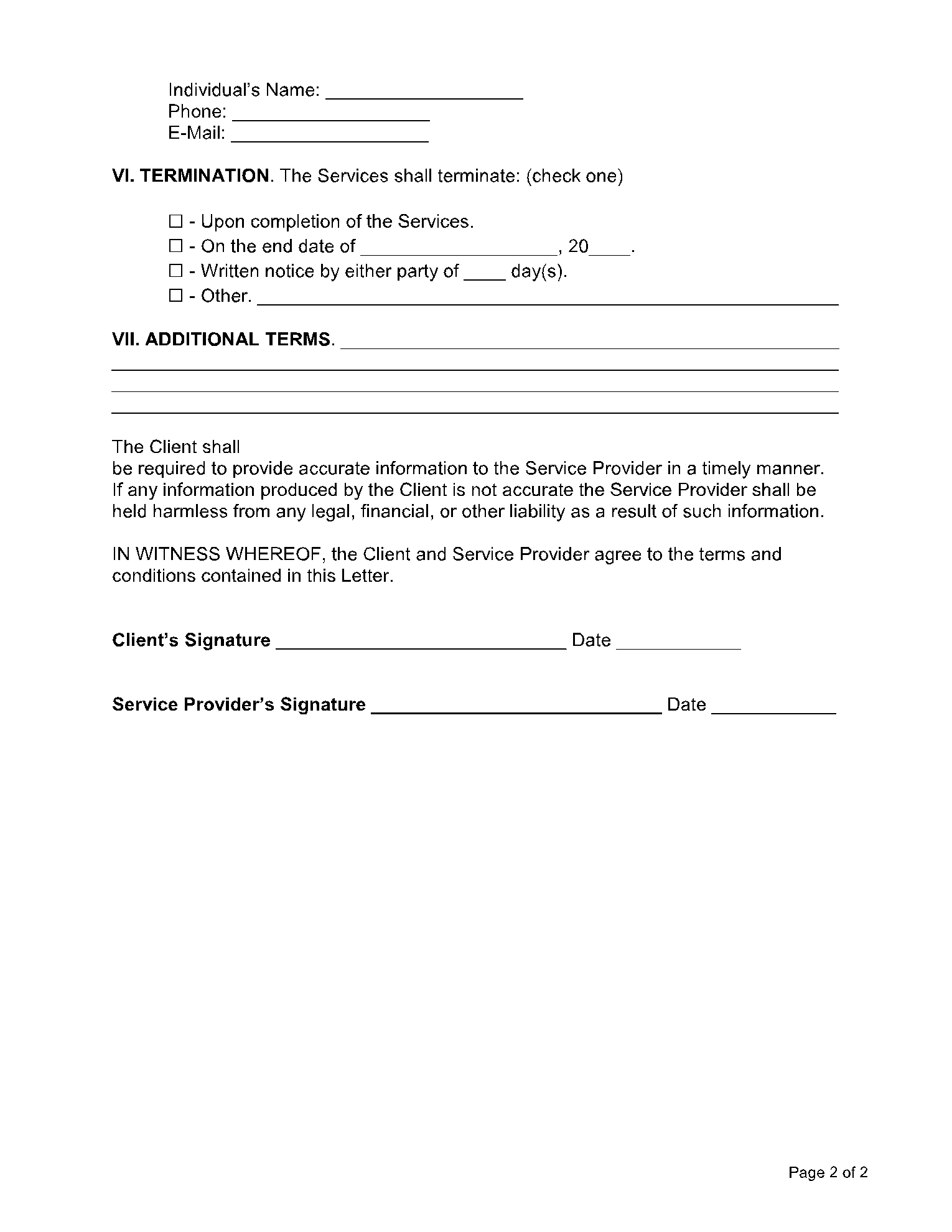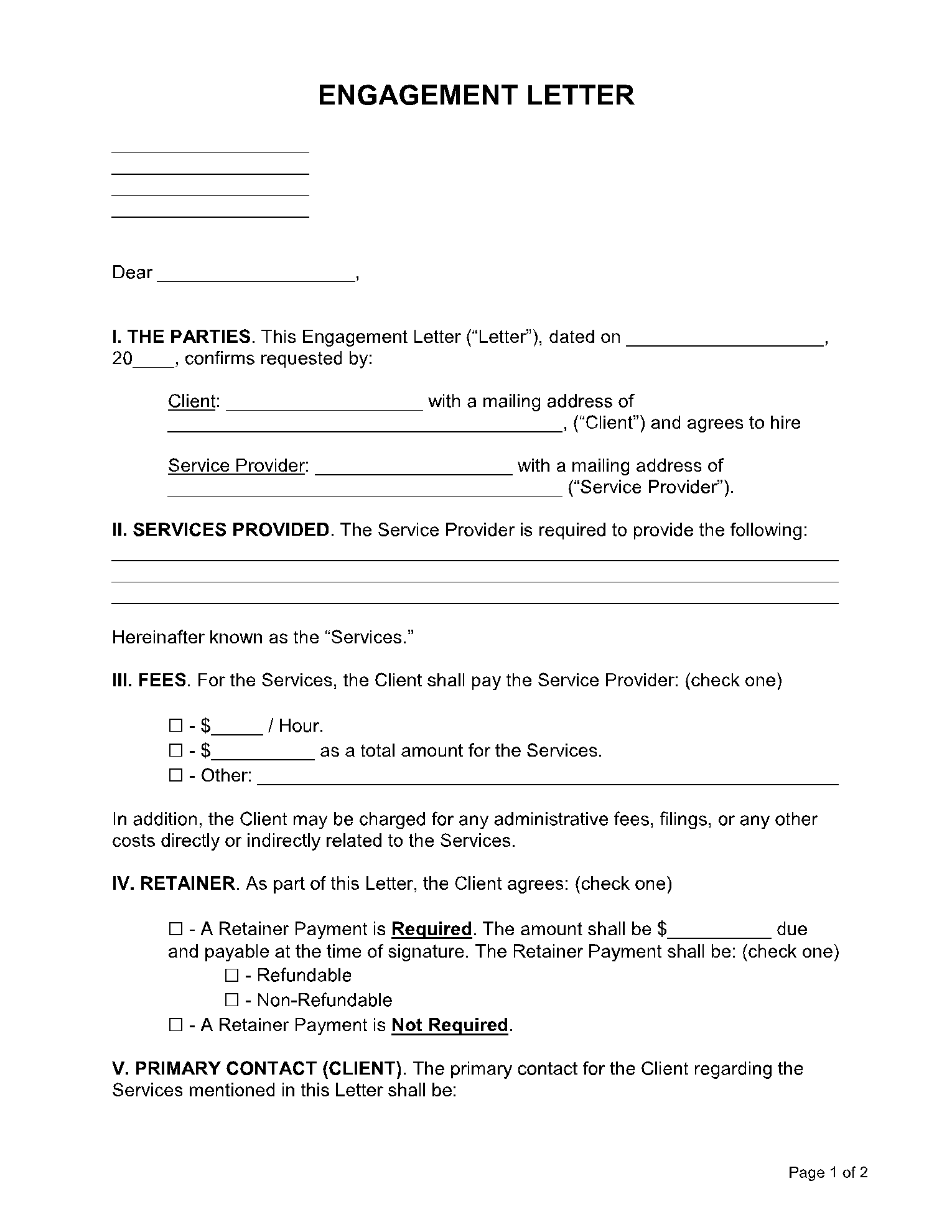Before getting into any business relationship, it is important that all parties involved set the record straight from the get-go, noting down in print all the fine details of the contract. One way to do this is using an engagement letter.
This document is helpful in mitigating risks and helping guide against misunderstandings in any employment relationship. This article talks a lot more about what it is, how it works, who needs to use one and why it is important.
What Is an Engagement Letter?
An engagement letter is a written agreement, recognized by law, that describes the business relationship between a client and a third party consultant. It outlines fine details like payment structure, terms of work, and duties and obligations of both parties involved.
This document is often used by professionals like lawyers, real estate agents and accountants to properly record their relationship with a client as often required by the laws of the state.
How an Engagement Letter Works?
An engagement letter serves the same purpose as a contract document. However, the language used is a little less formal and is usually free from legal buzzwords or jargon.
This engagement letter can be used to limit the powers or responsibilities of a company either directly or by inference. Signatories to letters of engagement are bound by law to honor the stipulates of this agreement. Failure to honor the terms of the agreement would usually attract a penalty.
A retainer is a key part of an engagement letter. Before a job is carried out, clients can signify their commitment to it by paying an advance fee for the job. This advance payment is referred to as a retainer.
Most often than not, for a long-term relationship, many businesses (clients) may require that the contents of the engagement letter be updated on an annual basis, and the third-party consultants or contractors show their approval for the continued relationship by renewing their signatures.
The following are fundamental components of every letter of engagement:
- Identification
- Scope of services
- Fee structure
- Duration of project
- Termination of project
- Confidentiality
- Professional standards
- Responsibilities
- Limitation of liability
- Additional terms and conditions of engagement
- Confirmation of terms
Usually, after these sections are filled, the document is printed in at least two copies. Both the client and the third part consultant are required to sign the copies. Should the client be a firm or organization, the document should be signed by a representative of that organization who should be a person of high authority from that organization.
Both parties to the document must keep at least a copy of the signed document for record purposes.
Why Is an Engagement Letter Important?
Helps set expectation:
A well-structured engagement letter can be used to set the expectations of the client for the work to be done. The contractor or consultant can highlight the milestones he/she hopes to reach for a time interval. This gives the client an idea of what to expect.
Cut down risks:
Using an engagement letter can go a long way in reducing professional liability insurance premiums and limiting a brand’s risk of getting into any litigation.
Reduce scope creep:
A contractor or third-party consultant can reduce scope creep by clearly stating what their services include, as well as setting expectations with the client. They can also highlight how they intend to go about any additional task the client might need them to do.
Help prevent misunderstanding:
An engagement letter takes a huge chunk of the guesswork from a business relationship. A contractor, for example, can highlight in print that he or she will be charging an additional fee for any additional service. Should the client need such service, it no longer comes as a surprise for it as it can be seen that the fee was clearly written in the engagement letter.
Who May Need to Use an Engagement Letter?
The following set of people may need to use an engagement letter in their dealings:
- Legal consultants
- Accountants (CPA)
- Auditors
Although verbal agreements are legally binding in some climes, they can be really difficult to enforce. An engagement letter, in contrast, is easier to enforce and is a sure-fire way of militating against misunderstandings. If you don’t know how to draft one, CocoSign is here to help. On the platform, you will find numerous engagement letter samples and templates you can download for free and use.

